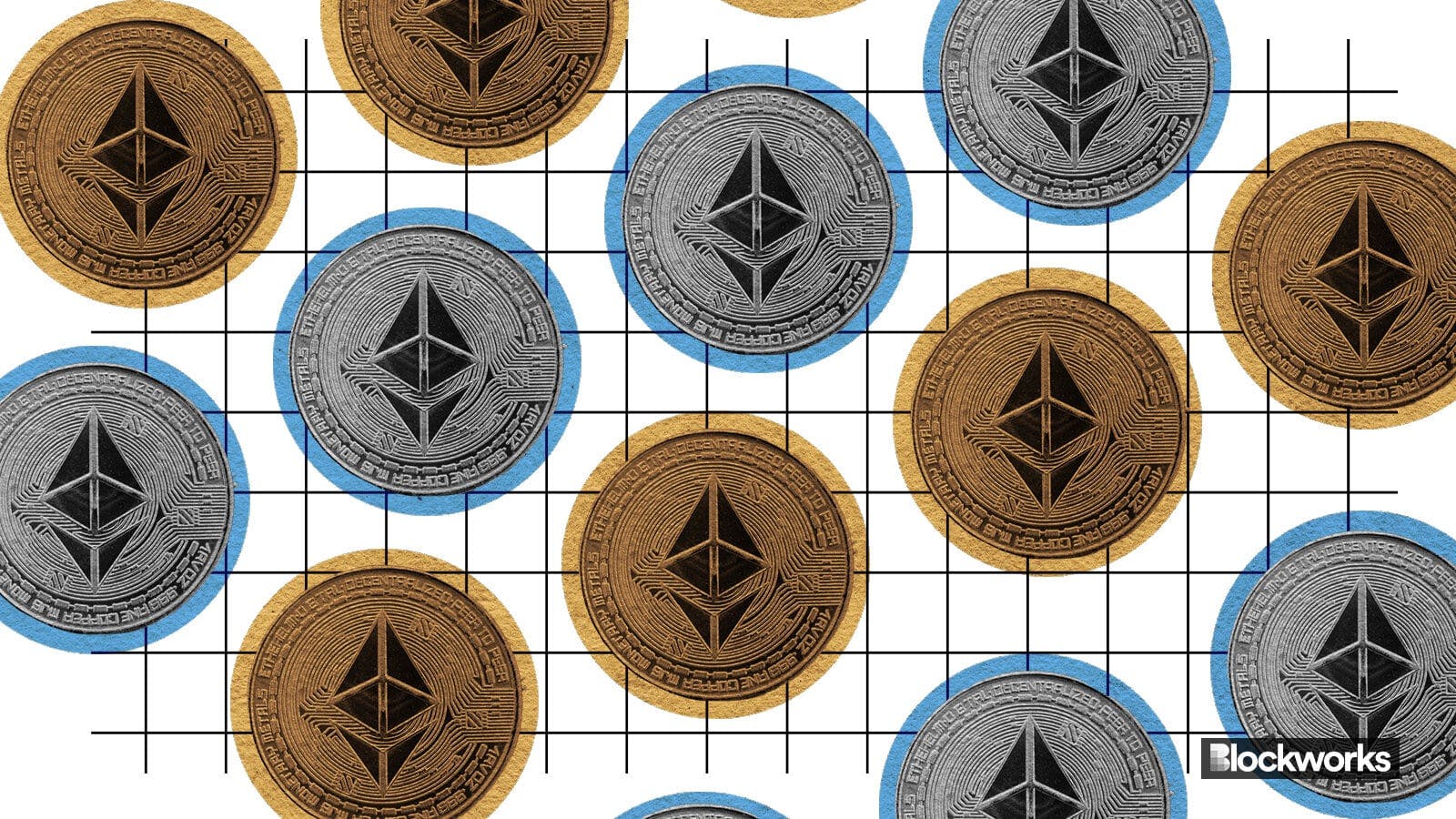Gnosis Chain premieres Ethereum’s Dencun hard fork
For the first time, a major Ethereum hard fork launches on another chain first

Artwork by Crystal Le
Gnosis Chain, originally known as xDai Chain, is a proof-of-stake blockchain designed to maintain full Ethereum compatibility, including the ability to directly implement all hard-forks.
At approximately 2:30 pm ET, Gnosis activated the Dencun hard fork, which is set to go live on Ethereum in less than two days. That is made possible as Gnosis’ design mirrors that of Ethereum, with a “Beacon” chain and an execution layer.
Gnosis can be thought of as kind of like a research network to test things in the real world, according to infrastructure director Phillippe Schommers.
Read more: Ethereum devs debate future of account abstraction
“We really want to stay exactly like Ethereum, so that an application developed for Ethereum can come to Gnosis Chain seamlessly,” Schommers told Blockworks.
The Dencun upgrade is focused on scaling Ethereum through layer-2 networks with the introduction of a new dedicated data storage channel — dubbed blobs — that will dramatically decrease transaction costs on Ethereum rollups which use Ethereum for data availability.
No errors were reported on Gnosis Chain after the fork, and the chain is now finalizing with blobs, said Ethereum core developers on a livestream commemorating the hard fork.
Read more: Ethereum Foundation gives Dencun upgrade an activation time on March 13
Exactly how cheap transactions can get is still a matter of debate. Martin Koeppelmann, Gnosis co-founder, predicted on the Gnosis livestream that rollups will not reach sub-cent transaction fees.
“We still think we need more, so we have Gnosis Chain as our horizontal scaling — very similar to Ethereum — and now we also do layer-2s on top of Gnosis Chain,” Koeppelmann said.
With the Dencun hard fork, tech stacks that work for Ethereum to launch rollups will also work on Gnosis Chain out of the box.
Even on the Gnosis layer-1, gas costs, paid in xDAI — a derivative of the DAI stablecoin — are well under $0.01.
One of the first applications of layer-2s on Gnosis Chain will be for Gnosis Pay, the payments network that is now rolling out. Gnosis Pay currently operates on the base layer, but will migrate to layer-2s, perhaps segregated by jurisdiction, to facilitate regulatory compliance — with data protection laws, for example.
Read more: Non-custodial crypto cards proliferate as part of wider industry trend
Once the infrastructure is in place, the goal is to provide abundant blockspace and focus can shift to productive uses in the form of apps that can appeal to non-technical users.
“Moving from Ethereum to layer-2, or to another chain with bridges, or with sequencers or whatever, is always going to be complicated for the average user,” Schommers said.
“We should work a lot more on the application part and make it seamless.”
Get the news in your inbox. Explore Blockworks newsletters:
- The Breakdown: Decoding crypto and the markets. Daily.
- 0xResearch: Alpha in your inbox. Think like an analyst.






